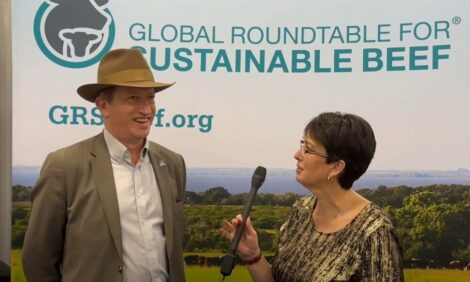



Cows Show Preference To Indoor Housing
When given a choice during the summer high yielding dairy cows prefer to be inside with access to a total mixed ration than at pasture, according to research from Harper Adams University College and Reaseheath College. Cows like to be housed, at least some of the time. That was the finding of a study, carried out by researchers at Harper Adams University College and Reaseheath College, that set out to determine whether high genetic merit dairy cows have a preference to be indoors or on pasture and to assess which environmental factors influence their preference.
“Cows expressed a partial preference to be indoors, which was influenced by environmental conditions and individual cow factors,” Gemma Charlton told delegates at the 2010 British Society of Animal Science’s annual conference, held at Queen’s University, Belfast.
“It is possible that the higher yielding dairy cows expressed a stronger preference to be indoors as the TMR indoors allowed them to satisfy nutritional demands more easily than grazing at pasture. And the difference in the feed provided in each location may have influenced cow preference and requires further investigation,” she added.
Indoor housing and pasture can have both positive and negative effects on the welfare of dairy cows, and environmental conditions can influence the location that dairy cows prefer. Previous studies have shown that pasture is the preferred lying place for dairy cows during the summer months, but preference shifted towards indoor straw housing with deep bedding in the winter.
“However, it is unclear whether high yielding dairy cows have a preference for indoor housing or pasture and how environmental conditions and cow factors influence their choice,” said Miss Charlton, explaining the rationale behind her team’s work.
The study was conducted between May and August 2008 with 24 high genetic merit Holstein dairy cows in mid to late lactation. Twice a day after milking, cows were given the choice of going to pasture (0.56 ha) or to a cubicle house. They were then free to move between the two until the next milking. Indoors, a total mixed ration (TMR) (DM basis: 32 per cent grass silage; 25 per cent maize silage; 22 per cent concentrate blend (GLW Feeds, Loughborough, UK); 17 per cent whole crop wheat; 2 per cent seed hay; 2 per cent molasses) was available ad-lib. At pasture, sward dry matter (DM) was maintained at between 1,800 and 3,000kg DM/ha measured using a rising plate meter.
The study had three experimental periods, during each of which eight cows received an eight-day training period followed by an eight-day study period. Cows had at least two weeks prior experience of each location.
A video camera was used to record time spent indoors and at pasture. And to determine the environmental factors influencing the cow’s decision, weather conditions were recorded indoors and at pasture using a Davis Vantage PRO2 weather recorder.
“And we found that, when given a choice, the cows spent 91.9 per cent of their time indoors and time spent indoors was influenced by environmental conditions,” said Miss Charlton.
Rainfall influenced preference, with cows spending more time indoors on days when it rained. And relative humidity outdoors also influenced preference, as did relative humidity indoors.
“When the relative humidity was low indoors (≤ 70.2 per cent) and outdoors (≤ 78.7 per cent) the cows spent more time at pasture. Average temperature indoors and average temperature outdoors had no effect on preference,” she said.
Of the animal factors, milk yield affected preference, with high yielding cows spending more time indoors than low yielding dairy cows. And there was a tendency for BCS to influence preference too. Cows with a high BCS score spent more time at pasture,” she added.


